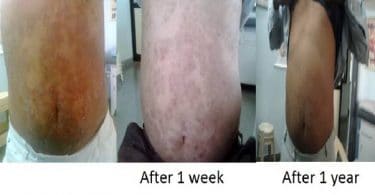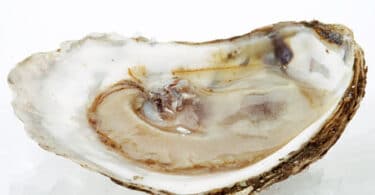Author information:
Dr. Navnit Vachhani
M.D.(Hom.)
PhD Scholar,
Consulting Homeopath
Dr. Vachhani’s Homeopathy Clinic
Junagadh (Gujarat-india)
Correspondence:
[email protected]
Keywords:
Boger’s approach, Boger’s Philosophy, Pathological general, Boger’s Repertory, Application of Boger’s work
Introduction:
Boger’s approach is one of three standard repertorial approaches.[1] It evolved through the experience and need Boger had felt in his clinical practice. Though it is fundamentally evolved from Boenninghausen’s philosophy and method, it has its own characteristic as individual approach in case analysis and repertorization.[1]
Boger imbibed his philosophy related to totality and case processing in works like Boger’s Synoptic Key and General Analysis- cards. Systematic appreciation of Repertorial approach was laid down by Dr. L D Dhawale. Dr. M L Dhawale worked on it further[1]
Moreover, Dr Phatak, Dr. P. Sankaran and currently Dr Norbert Winter worked on Boger’s philosophy and work. Their works highlight essential ideas of application of Boger’s approach.[2]
According to Dr Kasad, Boger’s approach signifies the emphasis on Pathological generals, Tissue Affinity and Time dimension along with essentials of Boenninghausen concept of totality. In Boger’s approach pathological general stands for general appreciation of pathology, and tissue affinity is tendency to affection of tissue/system/organ/regions involved. Time dimension appreciates time in various ways: time modality, periodicity, pace of the disease, phase of the disease, epoch of life, cause, concomitant and before during and after complaints.[3]
In recent times, german homeopath Dr. Norbert Winter highlighted 3 important aspects of totality while using Boger’s synoptic Key according to Boger’s philosophy in terms of pervasions, which is a kind of way to generalization for making totality for Boger’s synoptic Key.
(1) Spatial pervasion (Space/Location): when any symptom, its sensation or modality is present in more than one location or system affected that is important and to be generalised for use from Boger’s synoptic Key
(2) Temporal pervasion (time): when any location or sensation or pathology or modality is expressed repeatedly in old and new complaints (on time line of patient) that is to be generalised and used in totality.
(3) Qualitative pervasion (quality/peculiar): when any features (sensation, pathology, modality or any symptom) in a given case is very peculiar and intense it should be taken with importance.[4]
Dr Barvalia explains Boger’s approach in his interview, where he highlighted the concept of pathogenesis [5] which is consideration of phenomena of disease with its evolution and characteristic aspect, which is definitely more that isolated pathology. This widens the understanding of Boger’s approach and possibility of its application.
Originally it was not limited to only physical advanced pathological cases but gradually with time it became limited to only pathologically advanced cases. However, many stalwarts used Boger’s approach and his work like Boger’s Synoptic Key very effectively in their clinical practice in variety of cases. That became possible due to deeper understanding and appreciation of Boger’s philosophy and its connection with his work, like his repertories.[2]
This paper tries to understand the different applications of Boger’s approach in clinical cases, possibly with different types of pathological and non-pathological cases. It can be further applied and researched for its wider application in different types of functional as well as pathological cases in clinical practice.
Material and Method: (case material)
This is a retrospective study – case series method. They are cases from clinical practice with successful results where Boger’s approach was considered in totality and prescription were selected for retrospective analysis.
Conceptual elements used for application of Boger’s approach were identified and sorted from each case. A retrospective analysis of cases was conducted to show the application of Boger’s Approach in different types of cases (functional, pathological) (acute, sub acute, chronic) (physical or mental). Cases were Repertorised with Phatak’s Repertory as it closely follows Boger’s synoptic Key with some additional advantages.
Working Definitions:
Boger’s approach: Case analysis strategy based on Boger’s philosophy with prime importance on pathogenesis, affected area/location (tissue affinity), pathological general, time dimension and importance of modality and concomitant with generalisation.
Pathogenesis: phenomena of disease including its pace, pattern, evolution.
Pathological general: consideration of pathology at a general level from its affection of multiple level or striking form of presentation.
Tissue affinity: tendency of organism for certain tissue/organ/system/locations including sphere of action and regions affected.
Time dimension: The time element considered in evolution of disease including time modality, pace of disease, before/during/after affections, epoch of life (puberty, pregnancy, climaxis, old age etc.)
Case 1.
A case young lady in her lactation period, presented with pityriasis alba which started during pregnancy and continued till lactation when patient came to visit the physician. Hypo-pigmented spots started on face, then spread to upper limbs, back and all over body. She also presented agalactorrhea during her current lactation period.
Discussion:
This case presents very little data, but Boger’s approach helps to view totality from even limited data. Pregnancy and lactation as phase can be perceived as epoch of life (time dimension) which are physiological stress to the body during which expression of disease is occurring. Also, direction of spread of spots started above-downwards which suggests pattern of disease (pathogenesis). Milk absent was considered as an important concomitant as well as negative general of the case.
These important aspects of the case when repertorized gave Pulsatilla and Bryonia. Pulsatilla was selected on the basis of chief action during pregnancy and female reproductive system (tissue affinity). It cured both complaints within a month.
Conceptual elements: Time dimension, Pathogenesis, Concomitant, Tissue affinity.
Case 2
A 65 year old male presented with post viral synovitis in left ankle since 20 days which started after dengue fever. Fever subsided after some allopathic medicines. However, afterwards he presented with severe pain in left ankle joint with marked pedal oedema on his left foot.
This was aggravated in the morning. He had much difficulty in walking. He tried some allopathic pain killers without much benefit. He had anxiety (ghabharahat) in chest and epigastrium.
Discussion:
This case typically presented sub-acute phenomena of disease with characteristic particular marked oedema of left foot. Here sub acute state of disease is considered as part of pathogenesis (phase of disease, pathogenesis).
Unusually marked oedema was considered as a pathological general due to its intensity. Synovial membrane was considered as tissue affinity and morning agg. suggested time modality. When repertorized it gave Sulph., Brynoia and Kali Carb.
Oedema of left foot was seen as characteristic particular and anxiety in chest and stomach as mental symptoms were used to differentiate and finalise the remedy. Kali Carb relieved it completely within a week with 3 doses.
Conceptual Elements: Pathogenesis, Pathological general, Tissue Affinity, Time dimension, Objective aspect, Mental concomitant.
Case 3
A case of a male of 85 years with advanced stage of squamous cell carcinoma of the mouth in the poorly differentiated stage. The patient had complaints of ulcers in the mouth near the gums with moderate pain, bleeding +++ with salivation < especially in the morning (‘mouthful in morning’).
A few months prior, the patient had some ulcerative pathology on the ear lobe. A surgeon treated it by removing that part of the ear lobule. The other symptoms were memory poor – dementia, vision poor. His activities were limited, mostly sitting for all day. Interacting very little due to his memory and vision problems.
Discussion:
This is a case with apparently common data, but Boger’s approach is known to view the person in pathology and phenomena. Here old age – senility as expressed in degenerative pathology of carcinoma and dementia as well as poor vision was considered as pathological general as well as time dimension.
Orifices were considered as tissue affinity, as mouth and ear both were affected with ulcerative pathology. Though cancer is a diagnosis here, considering from a pathology point of view and same pathology repeated, it is pathological general here. Mouth ulcer and bloody saliva were taken to match the phase and location of pathology to cover basic pathogenesis of medicine.
These above elements when repertorized with Boger’s view, it gave Nitric Ac., Lach and Merc. Between these, Nit Acid was selected on the basis of bleeding ulcer and orifices affinity and malignancy. Lach and Merc were ruled out with absence of loquacious and impulsivity respectively.
Nitric Ac. in 30 potency, with frequent repetition gave good relief of pain and bleeding. This advanced pathological case was expected to achieve palliation rather than cure, which was achieved.
Conceptual elements: Pathological general, Time dimension, Tissue affinity
Case 4:
This was a case of a 34 year old housewife who presented with chronic calf pain with cramps during evening and night, also worse from exertion. She also had complaints about backache which was worse on exertion. Here cramps and back pain were worse every time before menses.
These complaints started after her last delivery. Though she had regular menses she had irritability and low mood before menses. Another complaint was leucorrhea daily since last 5-6 months which was scanty and with indelible stains.[7]
Discussion:
This functional case presented with little but very interestingly peculiar data. The totality was considered with reason as follows:
Delivery, after agg (Time (epoch) + Causative Modality)
Before Menses agg. (Time dimension modality – general modality)
Leucorrhea indelible (Peculiar Objective symptom)
Cramps (well marked intensified Sensation/Pathology)
Repertorization produced Viburnum op. covering all four important symptoms of totality. Others were partly covering totality. Reference from Materia Medica confirmed with all characteristics. Viburnum op. 200, 3 doses every 2 weeks was given, with much relief within 1month.
Conceptual elements: Time dimension, Objective symptoms, Causation. Modality
Case 5:
A 41 year old male presented with inability to pass urine, though urging for urination was normal. However, whenever he tries, he cannot urinate, even with straining. He had been catheterized since almost 3 months. No H/O Surgery or injury. No organic lesion. USG is normal. He had same complaints last year which were resolved within some weeks.
This time, the treating surgeon tried medicines but with no effect. A catheter was inserted for 1-2 days then removed, but c/o started again. So, patient is on catheter since almost 3 months. Treating surgeon diagnosed this as ‘Acontractile Detrusor Activity’.
No pathological lesions were identified. Also tried were other ayurvedic treatments but without benefit. When they removed the catheter the patient had the same problem.
Both times, complaints started after he faced disappointments from relatives and a business partner respectively. The first time he felt sever disappointment from his niece as she left him on some occasion and had not invited him, even after he took good care of her and spent money for her education after her father died.
This stress leads to the complaints. This last time he had felt deception from his business partner who made many suspicious deals without knowledge of patient and patient had to face loss and tough times. Patient felt severely hurt and then his complaints of inability to pass urine started.
Discussion:
This is a case of conversion disorder as there is no any organic pathology but clear correlated stress and its unexplained physical effects. From Boger’s approach, this case presented Cause-Effect phenomena in fixed pattern which is part of pathogenesis; ailment from emotions (hurt, disappointment) and its effect on urination both times makes it an important phenomena to consider.
Boger attributed this type of affection as ‘cerebro-spinal axis’ in his synoptic Key. This tissue affinity with emotions and chagrin aggr. with erratic pattern of affection (erraticity) of complaints make Ignatia the remedy of choice. Ignatia 1M frequent repetition in water dilution started urine flow the next day, after we removed the catheter and put him under observation.
Conceptual elements: Pathogenesis, Tissue affinity, Pathological general.
Analysis and Result:
The above cases show the range of different phases of pathology from functional to irreversible structural pathology. Different conceptual elements used in the cases that apply to Boger’s approach are seen in the flowing table.
| Case no. | Age | Sex | Diagnosis | Phase of pathology | Disease
Mental or Physical |
Medicine | Conceptual elements for Boger’s approach |
| 1 | 28 | F | Pityriasis Alba, Agalactorrhea | Functional, Structural Reversible | Chronic
Physical |
Pulsatilla | Time-dimension
Pathogenesis Concomitants Tissue-affinity |
| 2 | 65 | M | Post viral synovitis | Structural Reversible
|
Sub Acute
Physical |
Kali Carb | Pathogenesis
Pathological-general Tissue Affinity Time dimension (pace of disease and modality) Objective aspect Mental concomitant |
| 3 | 85 | M | Squamous Cell Carcinoma | Structural Irreversible | Chronic
Physical |
Nirtic Ac. | Pathological general
Tissue affinity Time Dimension |
| 4 | 34 | F | Leucorrhea
Cramps |
Functional
|
Chronic
Physical |
Vibrunum op. | Time dimension
Causation Objective aspect Modality |
| 5 | 41 | M | Conversion Disorder | Functional | Chronic
Mental |
Ignatia | Pathogenesis
Tissue affinity Pathological general |
Conclusion:
Boger’s approach when considered with its appropriate conceptual elements, is applicable in a variety of cases provided the case presented appropriate data to be interpreted in light of Boger’s philosophy. The above study and analysis shows application of Boger’s approach in functional and non pathological cases, including psychological cases.
The important conceptual elements to be considered to apply Boger’s approach are appreciation of pathogenesis, which includes evolution of disease, pace, patten of disease etc. Pathologcal general – appreciation of pathological processes at the general level. Time dimension-appreciation of different dimensions of time in the case and disease phenomena. Tissue Affinity- affinity of organism expressed in certain location in a case. Appreciation of Generalization, Concomitant and Modality.
This study focused on application of Boger’s approach in a selected variety of cases. Further study can be conducted focused on application to functional cases or psychiatric cases. Thus its potential for wider application in our clinical practice can be proved and appreciated to be utilised for betterment of patients and the profession.
Acknowledgement:
I am sincerely thankful to my teacher Dr. Anoop Nigwekar who ignited in me a spark for Boger’s application in a wider sense. I would also like to thank friend and colleague Dr. Dhaval Akbari, who was a constant companion in preparing this article.
References:
- Dhawale ML. Principles and practice of homoeopathy. In: Card Method of Repertorisation. 3rd ed., Ch. 10. Mumbai: Dr. M. L. Dhawale Memorial Trust; 2006.
- Vachhani NV, Nigwekar AM. Understanding the application of Boger’s concepts while using Boger’s Synoptic Key: A case series. J Intgr Stand Homoeopathy 2020;3(4):88-94.
- Kasad KN. ICR symposium volume on hahnemannian totality. In: Repertorial Concept and Technique. Vol. 2, Ch. D2. Mumbai: Dr. M. L. Dhawale Memorial Trust; 2003. p. D31.
- Winter N. A synoptic key of the materia medica. In: Introduction Notes. 4th ed. New Delhi: B. Jain Publishers Pvt. Ltd.; 2015.
- D’Souza L. Dr. Praful M Barvalia-Interview. India: Hpathy Medical Publishers; 2020. Available from: https://www.hpathy.com/homeopathy-interviews/dr-praful-m-barvalia interview-1.
- Boger CM. A synoptic key of the materia medica. In: Synoptic. 4th ed. New Delhi: B. Jain Publishers Pvt. Ltd.; 2006.
- Vachhani NV, Case Report; Calf pain in a woman of 34, April 2018, Hpathy Medical Publisheres; 2022 Available from: https://hpathy.com/clinical-cases/calf-pain-in-a-woman-of-34/







This is a very clear and extremely useful presentation. It provides a framework to cut through so much complexity.
Thank you Dr. Vachhani.
Thanks sir for the informative article and a tutorial in Boger’s approach. Very rarely this approach has been used. Where can I find more articles by Navnit Vichhani.
Are there articles available on differentials for multiple approaches. Thanks sgain and salute to Alan V. Schmuckler.